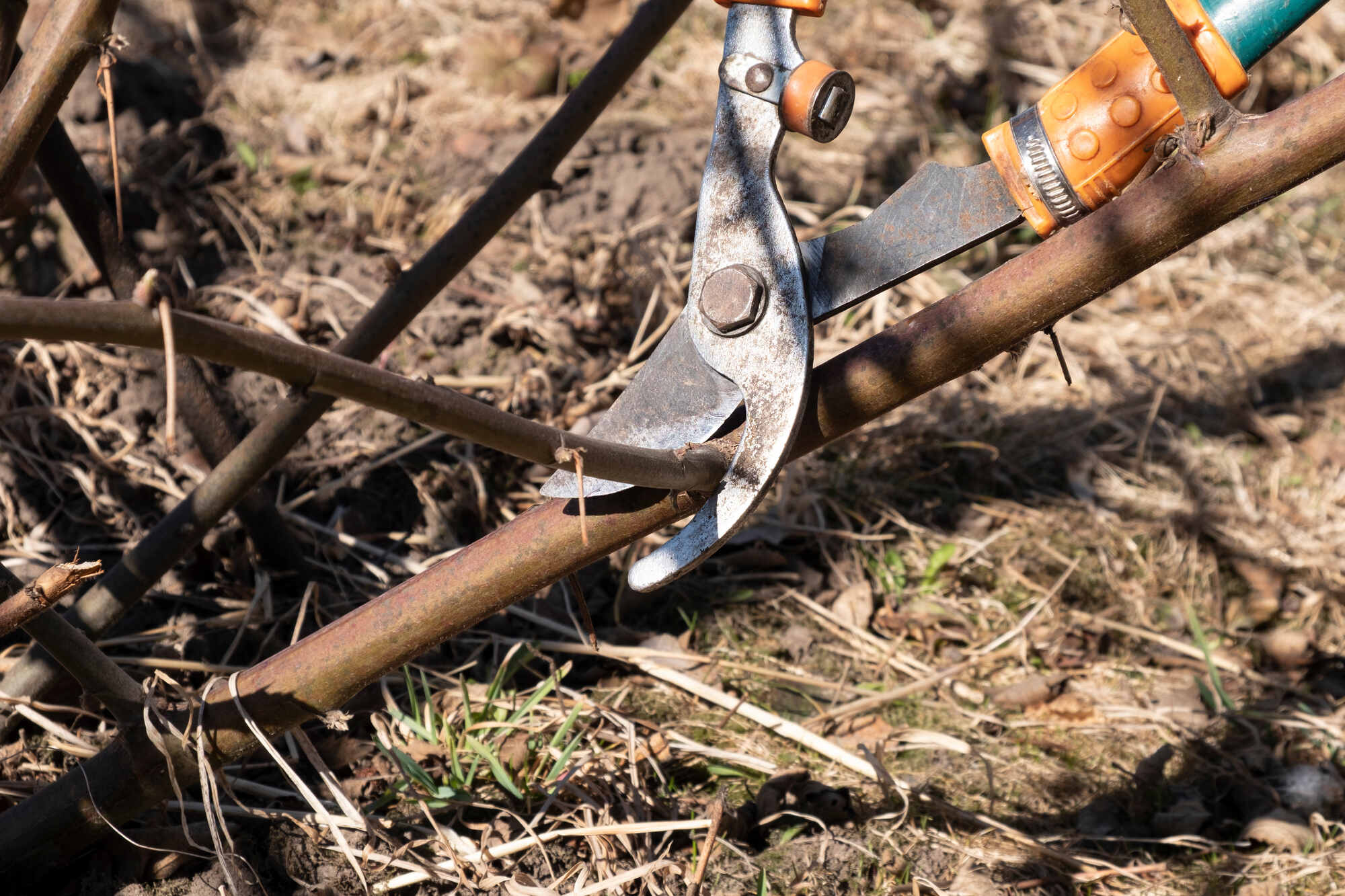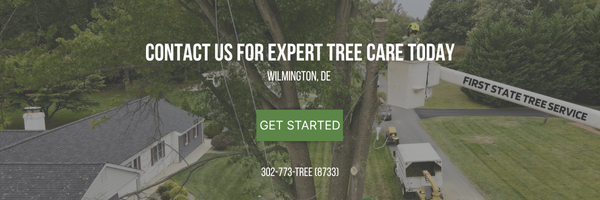5 Min Read
5 Mistakes Homeowners Make When Trimming Their Own Trees

Your trees should enhance your property, not create problems. Unfortunately, bad tree trimming and bad tree pruning are more common than people think. Whether it’s cutting too much, using the wrong technique, or trimming at the wrong time of year, these mistakes can turn a healthy tree into a liability.
In this guide, we’ll explain how to avoid bad pruning cuts, understand the difference between tree trimming and pruning, explore the types of tree trimming, and offer tips on how to fix pruning mistakes, all to keep your trees beautiful and your property safe.
Examples of Bad Trimming Techniques and Mistakes
Proper tree trimming techniques, such as the three-cut method and crown thinning, promote healthy growth and prevent damage. Common mistakes, such as over-pruning, topping, or cutting in the wrong season, can harm your tree's structure and health. Knowing what to do (and what not to do) is key to keeping trees safe and beautiful.
Mistake #1: Trimming Trees in Summer
One of the biggest mistakes is pruning during summer heat. Most trees are already stressed from dry conditions and high temperatures, and cutting into them now increases the risk of sunburn, disease, and slow recovery.
While a few species (like Juniper) tolerate tree trimming sessions in summer, most do better in late spring or winter. If you’re not sure when to prune your specific tree, don’t guess. Timing matters, and it’s often worth talking to a professional for clarity.
Mistake #2: Over-Pruning
Pruning too much can weaken a tree dramatically. The general rule? Never remove more than 10 to 15% of a tree’s canopy at one time.
When you over-prune, you strip away the tree’s food-making ability, cause imbalance, and slow down healing. The tree may respond with erratic growth, dead limbs, or stunted development. If your tree looks lopsided or bare, there’s a good chance you’ve gone too far.
Mistake #3: Making Bad Pruning Cuts
Using dull or dirty tools can leave ragged cuts that don't heal properly. Worse, they can introduce disease into the tree. One of the best ways to avoid bad pruning cuts is to use the three-cut method:
-
A small undercut prevents bark tearing.
-
A top cut removes the limb’s weight.
-
A final clean cut at the branch collar encourages natural healing.
Bad cuts aren’t just unattractive; they can weaken the tree permanently and invite decay. Show your trees some love and don't let this happen to them.
Mistake #4: Topping the Tree
Many homeowners ask, “Can you top a tree without killing it?” Technically, yes, but it’s rarely a good idea. Topping removes the main canopy, leading to weak regrowth and vulnerability to disease and pests. Instead, crown reduction offers a healthier alternative that controls height and spread without destroying the tree’s natural structure.
We strongly discourage topping unless necessary, and if it is, it should be done by someone trained in tree topping tips and safety protocols.
Mistake #5: Cutting Tree Roots
Cutting a surface root that’s cracking your walkway might seem harmless, but root pruning is tricky. Cutting the wrong root can destabilize the entire tree, making it unsafe.
Cutting tree roots without killing the tree requires precise technique and knowledge of the tree's root system. In most cases, this is best left to a certified arborist.
Tree Trimming or Pruning: What’s the Difference?
Many people use the terms interchangeably, but tree trimming vs cutting comes down to intent. We've broken down the definitions so that they're easy to compare and contrast.
- Tree trimming is typically done to shape the tree or remove overgrown branches that interfere with structures or paths.
- Tree pruning is more health-focused, removing dead or diseased limbs and improving structure.
Both are important, but knowing when and how to apply each technique is key to longevity. That's why having an expert team by your side helps make these calls.
Types of Tree Trimming and Pruning
Different trees and goals call for different approaches. Understanding the types of tree pruning helps avoid costly mistakes. Let's take a look at the different types below:
- Crown Thinning: Reduces interior branches to allow more light and air to flow through the canopy.
- Crown Raising: Removes lower branches to improve visibility or clearance under the tree.
- Crown Reduction: Shortens the overall size of the canopy while preserving its natural shape, an alternative to tree topping.
- Deadwooding: Eliminates dead, broken, or diseased limbs to prevent decay and falling hazards.
Using the right type of trim or pruning, especially when timed well, helps the tree grow strong, balanced, and safe. Our team is ready to make the call on what sort of tree trimming or pruning your trees need.
How to Fix Pruning Mistakes
If your tree has been over-pruned or poorly cut, don’t panic. Trees are resilient, and here’s what to do:
- Stop pruning: This allows the tree to recover.
- Water and mulch: This supports root strength and reduces stress.
- Fertilize lightly: Do this in the spring to promote regrowth.
Call a professional like our team at First State Tree Service, LLC. If the damage is extensive, we can create a long-term care strategy. If it's not extensive, we can still help you develop and implement a plan.
Tree Pruning and Trimming Mistakes FAQs
Do you have questions about tree pruning and trimming? Our FAQs break down everything you need to know, from the difference between trimming and pruning to when not to cut and how to fix common mistakes. Whether you're maintaining tree health or managing overgrowth, smart cuts lead to stronger, safer, and better-looking trees.
What Is a Bad Tree Trimming Technique?
Bad techniques include removing too much at once, making flush cuts, trimming during hot or dry seasons, or using dull, unsanitized tools. These can stress the tree, leave open wounds susceptible to disease, or create long-term structural problems. Proper technique and timing are key to preserving tree health.
What Is an Example of Bad Pruning?
Examples include topping the tree (removing the main canopy), cutting into the branch collar, or stripping too many limbs from one side. These mistakes disrupt the tree’s natural growth pattern and can lead to decay, pest infestations, or lopsided regrowth that weakens stability.
How Do You Fix Pruning Mistakes?
To correct over-pruning or poor cuts, stop further trimming and support the tree’s recovery with regular watering, light fertilization, and mulching. Avoid additional stress, like soil compaction. In some cases, a certified arborist can reshape the tree gradually over several seasons.
When Should You Not Prune?
Avoid pruning during early spring and summer when trees are actively growing. This is when they’re most vulnerable to pests, moisture loss, and disease. Trees heal more efficiently when pruned during dormancy in late fall or winter, depending on the species.
How Long Does It Take for a Tree to Recover from Pruning?
Recovery time depends on the tree species, age, and the extent of pruning. Light trimming may take one season to bounce back, while recovery from major pruning could take several years. With the right care, most healthy trees will restore themselves over time.
Let Us Help You Avoid Costly Mistakes
There’s a lot that can go wrong with DIY pruning, but there’s also a lot that can go right with the right help. At First State Tree Service, LLC, our job isn’t just to trim trees and help homeowners understand them. Whether you need routine tree trimming, land lot clearing, recovery after bad tree pruning, a second opinion on tree topping, or tree removal services, we’re here with a series of services to help you.
No pressure, no upselling: just honest guidance from people who love trees as much as you do. Our cost guide can help you figure out what your goals might cost and help you plan for your future.
Contact Us
Ready to get your trees in shape the right way? Contact us today to schedule a consultation.



